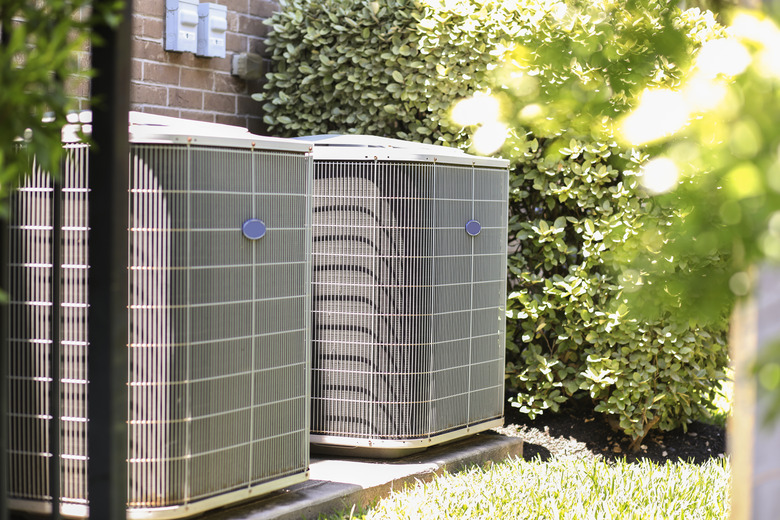How To Remove Mold From Metal
We may receive a commission on purchases made from links.
Mold can grow on almost any surface, including metal, when it's in a wet environment. The process of how to remove mold from metal requires removing the mold and disinfecting to kill any remaining mold spores. You also must eliminate the source of the moisture to prevent mold from growing in the future.
Recognizing Mold on Metal
Recognizing Mold on Metal
Not everything you think is mold on metal surfaces is actually mold. For example, moisture coming through a basement floor or wall may be carrying salts or other minerals. This salt solution can dry into a light-colored substance you might mistake for white mold growing on metal. Wet the surface of the metal with water. If the deposits dissolve and disappear, they were salt, not mold.
If you're in doubt about whether any substance is mold on metal, follow the full procedure for removing mold. Mold is an allergen for many people, and it can cause symptoms such as congestion and irritated sinuses.
Finding Hidden Mold on Metal Surfaces
Mold is sometimes hidden in damp areas, such as basements. You're most likely to smell a musty odor if there is hidden mold, and you will have to search out the moldy items. Places where you may find hidden mold on metal surfaces include condensate drain pans in your HVAC air handling unit or pipe chases where there are leaking pipes. If you suspect the hidden mold is widespread or is affecting areas you cannot access, consult a mold-abatement professional.
Things Needed
-
Rubber gloves
-
Long-sleeved shirt and pants
-
Spray bottle of water or hose
-
Soap or detergent that doesn't contain ammonia
-
Scrub brush or cloth
-
Bleach
-
Fan or dehumidifier
How to Remove Mold From Metal
1. Wear Protective Gear
Protect yourself from mold spores by wearing an N95 mask or respirator, rubber gloves, eye protection, a long-sleeved shirt, and pants.
2. Dampen the Mold
Spray the mold on the metal surface with water to dampen it before you begin scrubbing. Dampening the mold limits the number of spores being released into the air.
3. Scrub the Mold
Mix a solution of non-ammonia detergent (such as dish soap) and water. Scrub the mold off the metal surface using a scrub brush or cloth and the soapy water. With hard, nonporous surfaces like metal, scrubbing with a detergent should remove all the mold.
4. Disinfect the Metal
Once the mold growing on the metal has been removed, disinfect the surface to kill any remaining mold spores. Mix 1/4 to 1/2 cup of bleach in a gallon of water and apply it to the cleaned surface. Keep the surface wet for at least 15 minutes so the bleach has enough time to disinfect the surface.
5. Rinse and Dry
Rinse the metal with clean water to remove all traces of soap and bleach. Dry the metal surface by aiming a fan at it, using a dehumidifier, or opening the windows to increase ventilation.
6. Eliminate the Moisture Source
To prevent future mold growth, it's essential to eliminate the source of the moisture. For example, if the moisture is the result of a leak, the leak must be repaired.
Warning
Do not use any cleaning products that contain ammonia when you plan to disinfect with bleach. When ammonia and bleach mix, it can produce dangerous fumes.
